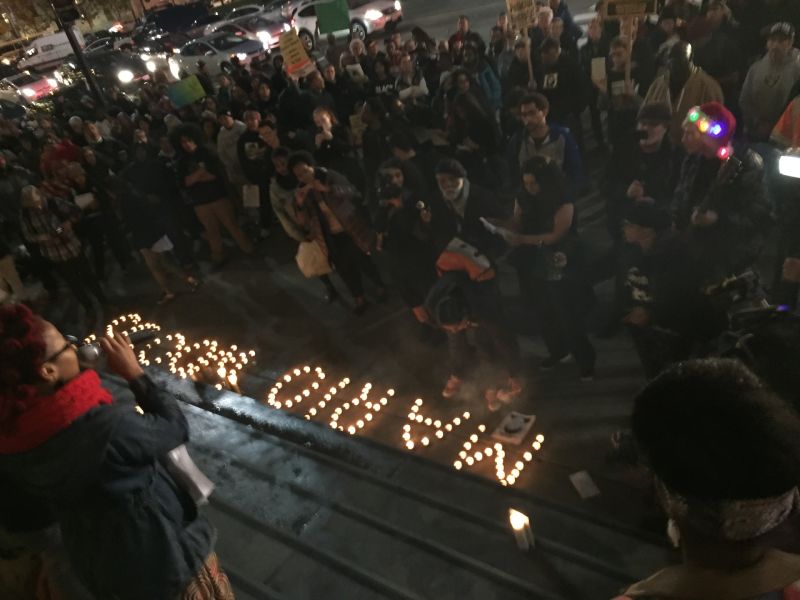"I, too, found the video upsetting," he said, and he referenced multiple ongoing investigations into the shooting. "No conclusions have been reached."
Suhr said he delivered "the facts as I know them" at a public meeting in the Bayview Friday when he said video appeared to show Woods raising his arm toward an officer before he was shot. KQED's slow-motion analysis of the same video found Woods raised his arm only after the first shot is audible. Neither Suhr nor the SFPD has responded to KQED's inquiry about the apparent contradiction.
"Chief Suhr, you have lost the trust and the faith of the community," the Rev. Michael McBride told the commission. "There’s some commandments that the San Francisco Police Department has to protect itself. We challenge these commandments that say that you shall be able to kill a black person whenever they don't comply at the moment you want them to comply. We reject the commandments that say because you're mentally ill and homeless, you're going to die on the street. Chief, it is time for you to resign."
Suhr said a revision to the department's use-of-force policies should include a discussion of equipping at least some officers with Tasers. He suggested a pilot program in which specially trained tactical officers would carry the devices.
"Officers should be able to call for them so that we never repeat anything even close to what happened last Wednesday," he said.
Suhr and the department's previous three chiefs have all tried to persuade the Police Commission to adopt Tasers as a further "less-lethal" means of controlling potentially dangerous subjects. Each time, concerns that the devices are dangerous and often ineffective have blocked their adoption. Those concerns were voiced again Wednesday night.
The Rev. Daniel Buford read several headlines to the commission describing torment of suspects at the hands of police armed with Tasers.
"The Taser, that's not a panacea," he said. "There's ample evidence that cops torture with a Taser, kill with a Taser, and if that doesn't work, they'll shoot him with a real gun."
This latest push for Tasers is just one prong of what could mark sweeping changes to policing in San Francisco and beyond in the wake of Woods' death. The department is joining a national effort to "re-engineer training on police use of force" with the Washington, D.C.-based Police Executive Research Forum.
"This is a top priority for all of law enforcement in the country, to get this change in police culture to go toward de-escalation and other alternatives to lethal force so that really the only time that a firearm would come into play would be when we're dealing with a person with a firearm," Suhr said.
Commission President Suzy Loftus said she also requested PERF's help in reviewing the department's use-of-force policies.
"There is a large paradigm shift that is happening in this country around policing," she said. She added that viewing video of Woods' shooting had "rattled the trust that, in particular, people in the African-American community have in this Police Department."
At one point, Commissioner Joe Marshall seemed to struggle to find words for what he was feeling.
"It's hard -- I'm hurt," he said, adding that watching the video was painful for him. "It was really, really bad. ... That's the last thing I wanted to see, and the thing that's so hard, we've worked so hard to close the gap, and it was all undone just like that. I'm sorry. I'm sorry for everybody."
